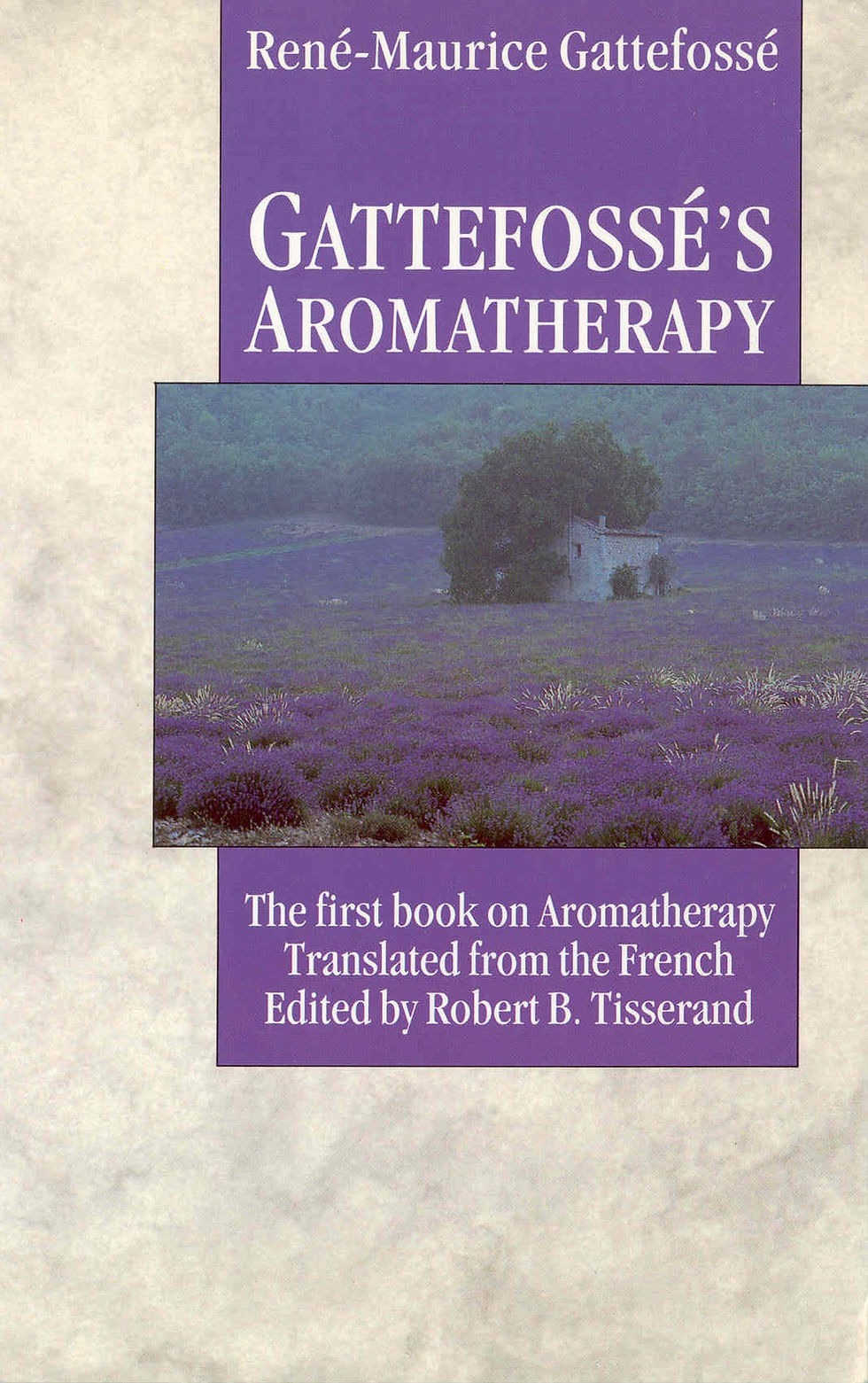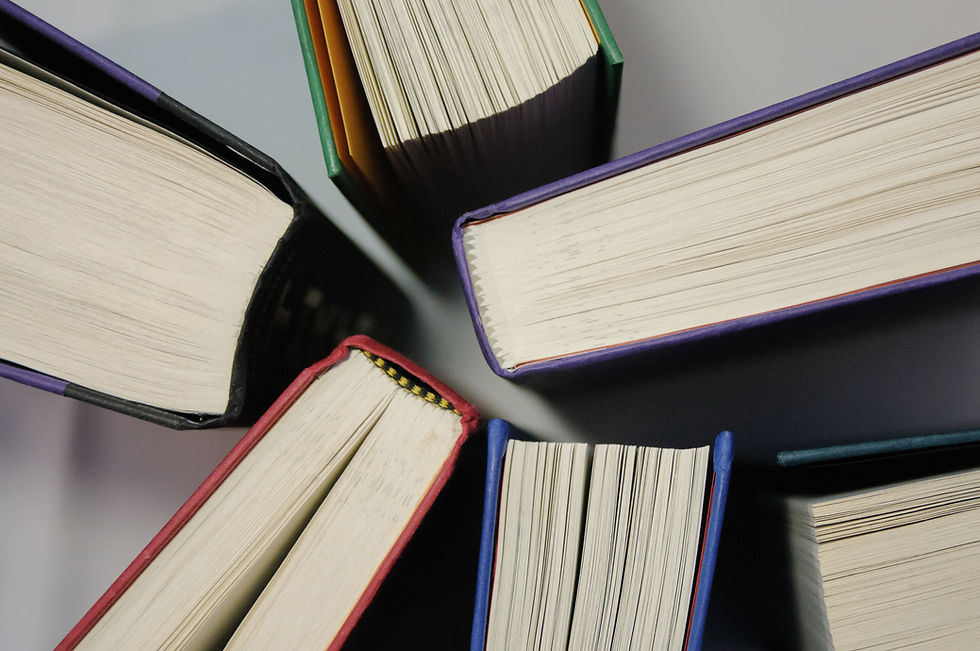Aromatherapy Reference Books
- Iracema Pearson
- Apr 27, 2022
- 6 min read
Updated: Oct 24, 2022
In this article, we are going to talk about some books that I consider reference for those who want to study or know about aromatherapy. When buying aromatherapy books, it can be sometimes difficult to know where to start. There are so many books and it is hard to know which one is good, what author is recommended, etc. To help, I decided to write a little bit about each book that I find important or interesting when learning aromatherapy.

The first reference book that I think every professional aromatherapist (or amateur) should have is Essential Oil Safety. It is a massive, 780-page book published by Churchill Livingstone Elsevier. It is currently in the second edition. The book was written by Robert Tisserand, an aromatherapy expert and essential oil researcher in London, England (currently living in the United States) and Rodney Young who is a professor of plant chemistry and pharmacology at the University of East London, England. The book is divided into: Introduction, Essential Oil Composition, Toxicity, Kinetics and Dosage, The Skin, The Respiratory System, The Cardiovascular System, The Urinary System, The Digestive System, The Nervous System, The Reproductive System, Cancer and Immune System , Essential Oil Profiles (second edition has 400 essential oil profiles while the first edition has 95), Constituent Profile and General Safety Guidelines. This is a book I consult when I have questions about an essential oil I want to use, especially when I make a blend and I need to know the maximum concentration I can use dermatologically.
Another book I recommend is The Complete Guide to Aromatherapy by Salvatore Battaglia. There are actually 3 books divided into: The Complete Guide to Aromatherapy Third Edition Vol I - Foundations & Materia Medica; The Complete Guide to Aromatherapy Third Edition Vol II- Science & Therapeutics; The Complete Guide to Aromatherapy Third Edition Vol III - Psyche & Subtle.

The Complete Guide to Aromatherapy Third Edition Vol 1 - Foundations & Materia Medica. The book is divided into Fundamentals, Materia Medica and Appendix. It provides monographs of 112 essential oils. Each monograph includes a description of botany and origins, organoleptic profile, chemical composition, a detailed history and traditional uses, a comprehensive review of pharmacological and clinical studies, a detailed discussion of the actions and uses of aromatherapy, blending tips, and advice for the safe use and much more. For now, I only have the first volume but it is a reference book that I like to consult.

The Complete Guide to Aromatherapy Third Edition Vol 11 - Science & Therapeutics.
The second volume talks about the science part involved in aromatherapy, holistic health and strategies, practical approaches and specific conditions.
Unit 3 - Science
8. Chemistry
9. Research
10. Pharmacokinetics
11. Pharmacology
Unit 4 - Practical Matters 12. Creating a healing environment 13. The healing encounter 14. Aromatherapy Massage 15. Aromatherapy for healthcare professionals 16. Development of a therapeutic strategy 17. Aromatherapy Blend 18. Aesthetic aromatherapy Unit 5 - Holistic Modalities 19. Botanical Medicine 13. Nutrition 14. Physical activity Unit 6 - Holistic Strategies 15. Detoxification 16. Stress management 17. Cancer 18. Inflammation 19. Immunity Unit 7 - Integrative approach to specific conditions 20. Affective disorders 21. Cardiovascular disease 22. Dermatological conditions 23. Gastrointestinal disorders 24. Infectious diseases 25. Inflammation / Autoimmune Diseases 26. Musculoskeletal disorders 27. Neurology 28. Obstetrics / Gynecology

The Complete Guide to Aromatherapy Third Edition Vol 111 - Psyche & Subtle. The purpose of Volume III is to explore the latest research and examine why scents and essential oils have such a profound influence on our psyche. Some of these mysteries involve understanding the mechanisms of smell, understanding the influence of essential oils on our psyche, and the energetic interactions of essential oils on our health and well-being. Recent neurobiological studies are beginning to unravel the complex relationship between essential oil constituents, hormones and neurotransmitters. Evidence also suggests that there may be a vibrational basis for smell, while neurotheology can provide us with a framework for understanding neuroscience, the cultural and spiritual aspects of smell and spirituality.

Aromatherapie by Rene Maurice Gattefosse. The book originally written in French was published in 1937. It was translated into English and edited by Robert Tisserand. Gattefossé was born in Lyon, France in 1881. Gattefossé was the third child of five children and was surrounded by perfumes from an early age: his father Louis, founder of Etablissement Gattefossé in 1880, represented foreign companies manufacturing essential oils, petroleum oils, household products and raw materials for the perfume industry. After graduating in chemical engineering he quickly joined the family business. It was he who took care of the research on essences and perfumes. It was Gattefossé who coined the word Aromatherapy in the 1920s. The book is a fascinating combination of ancient and modern knowledge, including over 50 medical case studies. For those who want to know more about Gattefossé I will leave the foundation link:
Shirley and Len Price have several books on Aromatherapy published. Practical Aromatherapy, The Aromatherapy Workbook, Carrier Oils for Aromatherapy & Massage e Aromatherapy for Health Professionals are among them.
Shirley Price's story began in Hinckley, UK in 1974. Shirley became interested in Aromatherapy to treat herself and her mother who suffered from arthritis. After many training courses, including some abroad, Shirley established herself as an aromatherapist. In 1978 she opened the Shirley Price International College of Aromatherapy and is considered a pioneer in aromatherapy education. Since then he has worked teaching and lecturing around the world, becoming a trusted name in aromatherapy teaching.

Aromatherapy for Health Professionals
The book is in the fifth edition. Whether you are a healthcare professional or not, I recommend this book if you are studying to become a certified aromatherapist (in particular, a clinical aromatherapist). The book covers the subject areas of: - chemistry of essential oils -how essential oils are used in the practice of Aromatherapy -use of aromatherapy in pregnancy and with the elderly -practice of aromatherapy worldwide (although the UK is covered more widely) -select essential oil profiles for health care practice (listed by plant botanical name).
Aromatherapy for Healthcare Professionals also includes real-life case studies by practicing aromatherapists so you can see how essential oils are used in “real” life and not just in theory. There are also graphs, tables and images for you to study and refer to. This may not be the book to choose initially if you are new to aromatherapy or if you are more focused on making your own skin care products, but it is a reference book for healthcare professionals.

Essential Oils - A Comprehensive Handbook for Aromatic Therapy by Jennifer Peace Rhind is another book that I purchased and I have been reading. It is an extensive book with many chapters well written.
It provides full information on the use of essential oils in the field of contemporary aromatherapy and aromatic therapy, based on the most up-to-date research evidence behind their therapeutic applications.
It is divided in Part 1 - Aromatic Therapy (A Historical Perspective; The Aromatherapeutic Renaissance; Scent and the Significance of Olfaction; Transdermal and Respiratory Routes; Botanical Principles and the Biogenesis of Volatile Oils; Essential Oil Chemistry, Aromatic Pharmacognosy; Aromatic Formulations.
Part 2 - Aromatics ( Component Profiles: The Biological and Therapeutic Actions of Essential Oil Constituents; Essential Oils and Absolutes of the Angiospermae; Essential Oils and Absolutes of the Gymnospermae.
Appendices (Fragrance and the Four Elements; An Introduction to Organic Chemistry; Components - Therapeutic Actions for Blending; Essential Oils and Absolutes - Principal Indications for Aromatic Therapy; Sample Formulae - Massage Oils, Body Oils, Butters, Salves and Bath Salts)

The Aromatherapy Beauty Guide: Using the Science of Carrier & Essential Oils to Create Natural Personal Care Products by Danielle Sade. The book is reference when creating your own natural skin care product formulas. With clear, easy-to-follow instructions, you'll be able to create your own signature products that will complement a natural lifestyle. The book is divided into: foundations, basic ingredients, essential oils and formulations. In the introduction, Danielle says that at the age of 26 (married and mother of 2 children) she had her first outbreak of psoriasis, which after a month covered 80% of her body. Since then she has started a 3-year journey of medical consultations and medications that have had no effect. Frustrated, she embarked on a healing journey through diet, meditation, relaxation and the use of only soap, perfume, natural detergents (which at the time were not available). It was around this time that she made her first homemade cream. She graduated in Nutrition and during the course her friend introduced her to essential oils. Since then, he began experimenting with essential oils and began to link nutritional medicine with aromatherapy. With over 30 years of experience teaching and practicing complementary health, Danielle introduces evidence-based information about skin care and natural ingredients.
I hope you enjoyed the article. If you liked it, share with your colleagues and leave your 👍 and comment.
A big hug 🤗
See you soon ❤️
Bibliography:
https://www.fondation-gattefosse.org/en/rene-maurice-gattefosse/


Comments